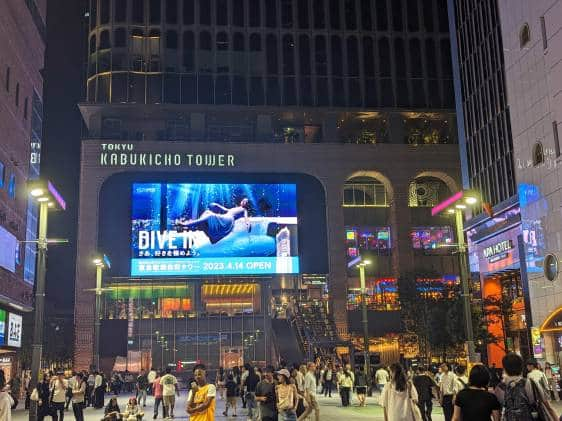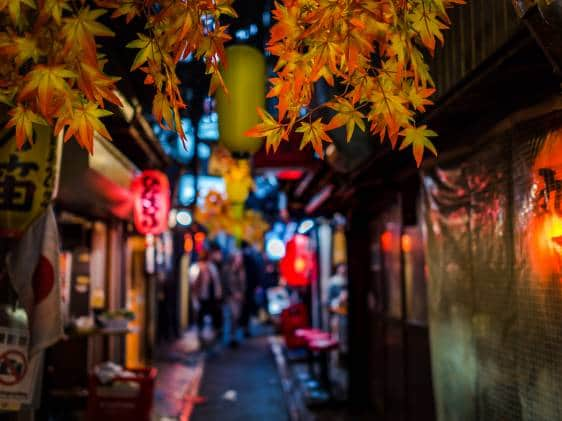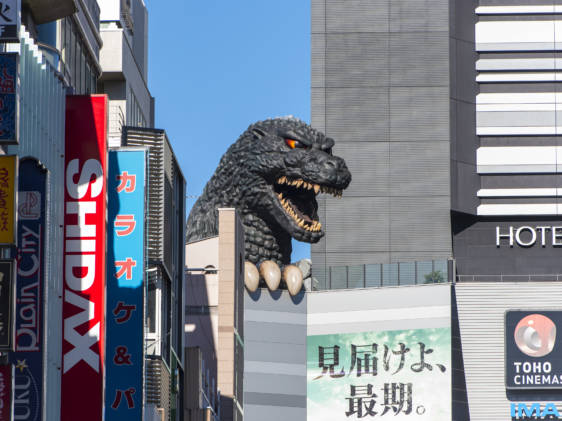Slap bang in the middle of central Tokyo lies Shinjuku Gyoen National Garden. It’s so different to the jam-packed surrounding streets that it’s almost as if you’ve stepped out of the city and into some older, more peaceful realm as soon as you pass through the turnstiles.
There has been a garden here since the Edo period: Once a feudal lord’s residence and later used by the Japanese Imperial family for recreation and the entertainment of guests. Today, even commoners like us can amble on the royal green of Shinjuku Gyoen Park. The current garden’s layout dates from 1906, with extensive rebuilding taking place after WWII.

What is to do in Shinjuku Gyoen National Garden?
For landscaping fans, there’s a sizable tropical greenhouse, and three styles of garden (French formal, English landscape and Japanese traditional), as well as vast informal areas to explore. Shinjuku Gyoen Park is also home to massive (no, seriously: massive) Himalayan cedars, a plane-tree avenue, ginkgos aplenty (worth making a special trip to see in autumn), a cypress grove, and many red and black Japanese pines.
Two lakes linked by a small river form a peaceful center to the garden, overlooked by a restored Imperial Rest House that was a gift from Taiwan.
In sakura season, Shinjuku Gyoen Park’s 1500 cherry trees explode in drifts of soft pink cherry blossoms, and it becomes a popular viewing spot. Visitors in November can also check out the park’s lone late-flowering cherry. The highlight in autumn is the impressive crysanthemum exhibition, where flower arrangements of hundreds and hundreds or mums are displayed by Japan’s masters in the art.
It takes place in the first half of November every year. During summer, Shinjuku Gyoen Park is a refuge from the city’s heat and in winter, the more serene and calm atmosphere still draws visitors.

Opening hours: What time does Shinjuku Gyoen open?
From March 15 to June 30 and August 21 to September 30, Shinjuku Gyoen Park is open from 9 am to 5:30 pm (gates close at 6 pm).
From October 1 to March 14, Shinjuku Gyoen is open from 9 am to 4 pm (gates glose at 4:30 pm)
During the warmer months, from July 1 to August 20, the garden stays open later, from 9 am to 6:30 pm (gates close at 7 pm).
The park is closed on Mondays and over the new year period (Dec 29 to Jan 3). During cherry blossom season (March 25–April 24) and the Chrysanthemum Festival (Nov 1–15) it remains open on Mondays too.

Does Shinjuku Gyoen Park have an entrance fee?
It costs ¥500 for adults, and ¥250 for seniors and students (high school and University), while junior high school and under are admitted for free. You can buy tickets at the machines near the gates or from an attendant in the booth.
Access: How to get to Shinjuku Gyoen Park?
The park has three entrances, all near major train and metro stops. The Shinjuku Gate is a 10-minute walk from, you guessed it, Shinjuku Station. Take the New South Exit. Shinjuku-Gyoenmae Station on the Marunouchi Line is only 5 minutes away. Or you can also walk to the Okido Gate from here in 5 minutes.

The Sendagaya Gate is on the other side of Shinjuku Gyoen Park and a short walk from Sendagaya Station on the Chuo Line. Nearby stations like Yoyogi (Chuo, Oedo, Yamanote) and Kokuritsu-Kyogijo (Oedo Line) are also options if you want to get a walk in.
The Okido Gate is often closed for those entering the park, but you can exit from this gate at the northeast corner. This is the best gate to exit from if you are heading in the Yotsuya direction.

Here is a handy map of the garden to get your bearings and plan your route.
Restaurants: Where to eat near Shinjuku Gyoen?
If you get peckish, then Shinjuku’s incredible range of restaurants is only a stone’s throw away. Here are 5 sushi restaurants close to Shinjuku Gyoen National Garden and two nearby options for vegetarian/vegan or halal eats:
Curry Kusamakura offers some of the best curry in town as bowls of varying spiciness levels. Try their popular grilled eggplant for a vegatarian option but they have chicken as well.
If you’re looking for a halal and/or vegan friendly spot, then Ouka has you covered. They serve delicious bowls of vegan ramen or wagyu beef.

Hotels: Where to stay near Shinjuku Gyoen Park?
Here are our three favorite options on a budget:
Apartment Hotel Shinjuku | From ¥6,800 per night
This place is sort of like renting a tiny apartment with a reception desk. You get a room with a small kitchenette and a more local feel than one of the many highrises. Check rates and availability.
Hostel Pumpkey Tokyo | From ¥2,700 per night
A friendly but basic hostel, Pumpkey offers female-only, mixed and group dorms. The private rooms work out fairly cheap too, but you are still sharing a bathroom. Check rates and availability.
Shinjuku Kuyakusho-mae Capsule Hotel | From ¥3,500 per night
Offering male and female capsules, this place is an affordable and ultra-Japanese way to get a little more privacy than a hostel dorm. It has a surprisingly impressive Greco-Roman–style bath area, free wifi and a bar/lounge area to relax and eat in. Check rates and availability.
Nearby places and attractions
- Sekaido (art supplies)
- Golden Gai
- Hanazono Shrine
- Is Tokyo's Hop-on Hop-off Sightseeing Bus Worth It?
- Yozakura: 8 Best Nighttime Cherry Blossom Illuminations in Tokyo
- Kawazu-zakura: Where To See Early-Blooming Cherry Blossoms
- Anime Tours: The World of Your Name, Makoto Shinkai, and More
- Tokyo Flower Mega Guide: Blooms to See Every Month of the Year
- Top 5 Cheapo Date Ideas in Tokyo
- Shinjuku Gyoen: The Garden Lover’s Guide
- 10 個玩轉新宿的免費景點
- A Guide to Tokyo's Historic Cherry Trees
- Kōyō: 14 Places to See Autumn Leaves in Tokyo
Students: ¥250
Seniors: ¥250
- 277 m from Shinjuku-sanchōme Station Fukutoshin Line (C13)Marunouchi Line (M9)Shinjuku Line (S2)
- 302 m from Shinjuku-gyoenmae Station Marunouchi Line (M10)
- 0.7 km from Yoyogi Station Oedo Line (E26)Yamanote Line (JY18)Chūō-Sōbu Line (JB29)



















